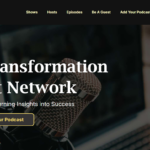Recently I took a trip with my 8-month-old son to stay with our aunt and uncle at their lake home in southern Missouri. This involved two short American Airlines flights from our Indianapolis hometown to a smaller, regional airport and then an hour’s drive south.
It was just the two of us and about 7 hours of total travel time. We checked our luggage (with a long weekend’s worth of formula and diapers), got our coffee (he drinks decaf), and headed up to 30,000 feet. When we arrived at our final destination, our luggage was nowhere to be found.
Dear reader: Whether you’re living those days now or have in the past, you understand the uncertainty and amount of crying involved in traveling with children. And now we’re in a new town without any of his supplies, and yes I had one day’s worth of supplies in our diaper bag.
American Airlines Digital Transformation is a Tech-First Mindset Currently Focused on Airport Arrival to Take Off
American Airlines current digital transformation initiatives have been underway since at least 2019, solved real problems throughout the pandemic, and, no doubt, is another decade worth of work.
In 2022 the former CIO, Maya Leibman, was quoted in CIO Magazine as saying, “Touchless, seamless, stressless. We’ve always had this vision….” A May 2024 article from their newsroom highlights these ongoing developments, focusing on shortening taxi time and reducing ramp congestion; using analytics to reduce hub congestion and cancellations; and empowering customers with self serve technology via their app and website.
Based on other sources it seems their current focus is on ticket purchase and management and then getting the plane to take off much more efficiently, using less jet fuel and sitting on the ground for less time. It makes great sense that they’d start at the beginning of the buyer’s journey.
Touchless Doesn’t Always Equal Seamless During Transition
To be fair, American Airlines has never lost my bags in the past so I don’t know what the previous practices were. In August 2024, what followed next is a clear gap in a digital experience that is not seamless or stressless. Yet was touchless in all the wrong ways.
Friday
- I tried to find an airline employee in the baggage claim area. The airport security guard tells us that the same person that works that office is also responsible for unloading luggage from the planes so isn’t around much.
- Within 15 minutes, the airline’s app notified me that my luggage was still in Chicago and asked that I complete a form. It was very easy to use and asked me to enter the address where I needed the bag delivered to. Sweet.
- Another woman can tell I’ve also lost my luggage and asks me for help. She also came from Indianapolis, and they’d lost her luggage. Except she doesn’t have the app. I walk her through how to download the app, load in her flight, and start the reporting process.
- An hour after arriving an email arrived notifying me that my bags are delayed, and I have 3 hours to complete a report and ask for free delivery. (Which I’ve already completed in the app.)
- Spending $200 in 30 minutes, our family goes to a big box store to stock up on needed supplies before heading into the rural area where their lake home is.
- For 36 hours, the app shared a status of my bag: Searching.
Saturday
- My inbox had multiple emails on the status update of my delivery from a third-party provider: her name and vehicle and that she’s arriving any time between Saturday at 4 a.m. or Sunday after 10 a.m. (We leave on Monday.) It’s clearly an Uber-type of service for lost luggage.
- I received an email mid-day to complete another form to waive the signature needed or it can’t be delivered.
- The luggage arrived on the front porch with all contents, after 30 hours. The neighbor texted my uncle that there’s suddenly luggage on the front porch while we’re drinking our gin and tonics on the back porch. I also had a text confirming arrival. I love technology and small town life!
- During my return flights, I stopped at a customer service desk to ask how to file a claim for expense reimbursement and was told that needed to be done at my home airport with that baggage claim agent. When I arrived back in Indy, that agent shared the website to file a claim — the claim process didn’t start with her. She was also very kind and said, “I’m so glad you came to see so I could get you the right information.” Same here, kind ma’am.
Whew! 30 hours, 3 platforms, and 1 helpful human.
According to an airline quality-rating site, American Airline typically loses 8 out of every 1,000 bags handled. I don’t think that’s a terrible statistic. For the world’s largest airline that is indeed a large volume; and a major inconvenience and not-small expense for me.
Another 2022 article from American stated how their Microsoft partnership will, in part, focus on enhanced bag tracking. The teams involved in this process deserve the benefit of the doubt: my experience reflects a digital transformation project that’s not yet complete. Their deployment strategy was not to lift-and-shift into one experience — or allow users to choose where they wanted that experience to happen. Nor do their use cases consider non-app users and infrequent/un-loyal consumers.
Clearly their initiatives are mostly focusing on flight management, ticket purchasing and management, and that front end experience for those first 30,000 feet. No doubt foundational for the years ahead.
Minding the Gap in the Transformation Journey
Transformation is not a smooth process. It should come with starts and stops; inefficiencies and gains; learning and upskilling. It should come with ruthless prioritization. This article isn’t about complaining about my lost baggage. My intent is to demonstrate the balls that get dropped while we’re busy as leaders innovating and the real impact it has on customer experience — the one thing we hope to be fixing.
Ultimately transformation is about delivering increased value to the world (i.e. for customers and other stakeholders).
As a leader, how might you encourage your teams to ease the transitions necessary throughout transformation?
Over-communicate where the gaps are.
At no point during my digital communications, did one platform tell me to look in another platform for more communication. The app didn’t know about the transit status for the on-the-ground delivery service; and the system sending email communication didn’t know what I had done in the app.
Proactively identify where gaps are created for customers.
The airline knew I was flying with an infant in my lap based on ticket data. The humans designing the tech understand the perils of landing in a new city without life’s necessities, like baby formula and that new outfit I was really excited to wear (ha!). How about a coupon for a big box or drug store to help with the inconvenience? And to drive traffic to a partner?
Personal human touch goes a long way in a clunky process.
Inconsistent and disjointed experiences create frustration. Customers don’t understand the limits to technology or the investment it really takes to create flawless experiences. Also, I hope transformation leaders never find themselves without the life jacket they brought for their infant to wear on the boat. But for customers, all that matters on a Friday afternoon is that the life jacket isn’t there and they now need to spend part of their vacation day shopping when they expected to be by the lake. When the technology is still clunky, customers need someone to guide them through your systems. I’m still left flummoxed as to why an employee of another organization (the airport security guard) was giving us instructions on how to fix our lost luggage problem. A simple, old-school flyer taped to the glass office door could have got us started on the journey of filing our report.
Earn credibility by taking responsibility.
At no point has the airline invited me to submit the expense reimbursement claim, nor does it communicate the process via one of these platforms or in an easy-to-access place on the website. Mistakes have costs but don’t make your customer bear that cost.
Summary
Transformation projects often create more messes before they create real solutions. That’s part of aiming high. As a leader, re-orient your transformation team to look for places for people, information, and resources to get lost in the process and technology as you redesign your systems. Mind the gaps in those interim iterations as fierce as you would for the final product. Your customers deserve it.
Tag/s:Artificial IntelligenceBusiness TransformationCustomer ExperienceDigital Disruption






Loved how you shared this experience, Stephanie. Spot on with all the “gaps” in the process, delivering an undesirable customer experience. This also speaks to having many unique channels in the process that don’t integrate and have information flowing seamlessly across. And to your point, relying on kind humans to fill a gap should not be the way companies settle this gap situation. I agree, this seems to be a work in progress, so let’s hope AA continues to work on the CX and finds more consistent ways to close those gaps. I fly AA too!
Thanks Nora! In the age of constant change, the gaps will always be there! Seamless needs to be the name of the game for sure.